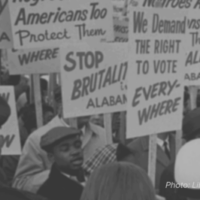Groups Demand DOL Retract and Correct the Proposed Rule
Washington, DC—Three national labor groups filed an unprecedented complaint today against the U.S. Department of Labor (DOL) for issuing false and misleading information and hiding information from the public when it recently proposed rolling back child labor laws in the healthcare industry.
The groups filing the complaint—the National Employment Law Project, the Service Employees International Union, and the Child Labor Coalition—are demanding that the DOL retract and correct the false and misleading information contained in its proposal.
“The Labor Department is violating the law and acting in an arbitrary and capricious manner by putting out false and misleading information and hiding key data,” said Debbie Berkowitz, program director for worker safety and health with the National Employment Law Project, and a former senior official with the U.S. Occupational Safety and Health Administration. “Policymakers cannot be allowed to just make stuff up and hide inconvenient truths. What’s at stake here is nothing less than our right to know what our government is doing and why—and our ability to hold government accountable for making sound policy decisions based on facts and evidence.”
The complaint alleges that the DOL violated the Information Quality Act—a federal law that aims to ensure information “quality, objectivity, utility, and integrity” by requiring government agencies to meet data quality standards when disseminating information to the public. The DOL violated the Act by knowingly and willfully failing to follow its own data quality guidelines as well as those set by the Office of Management and Budget (OMB), according to the complaint.
Issued in September 2018, the DOL’s proposed rule would eliminate protections requiring 16- and 17-year-olds to be assisted and supervised by an experienced adult employee when using power-driven patient lifting devices to lift and move patients with limited mobility. This highly demanding physical work requires more strength than many adolescents possess. The current protections, designed to protect young workers from musculoskeletal injuries and patients from accidents, are based on recommendations from the National Institute for Occupational Safety and Health.
But in attempting to justify its proposal to roll back the child labor protections, the DOL submitted into the record an unpublished draft fact sheet from the Massachusetts Department of Health’s Teens at Work Program that the DOL claimed was proof that the current protections are restricting employment opportunities for young workers. Actually, the fact sheet says no such thing. Rather, it highlights misperceptions and uncertainty about the protections and was prepared precisely because so many vocational schools and employers did not know about them. The DOL’s gross mischaracterization of the fact sheet is false and misleading.
Furthermore, despite repeated requests from Congress and stakeholders, the DOL withheld from the public record a survey that was cited in the fact sheet that the DOL claims supports the rule. NELP acquired a copy of the survey through a public records request, and it was immediately apparent why the DOL had withheld it. The survey, conducted through Survey Monkey, was seven years old, had only 22 respondents, and was never published nor peer reviewed. The survey did not show that vocational programs were having a harder time placing trainees because of the protections, as DOL claimed, but it did show that nearly half of the 22 respondents were unfamiliar with the child labor protections regarding use of patient lifts.
“There seems to be a pattern at the Trump Labor Department of hiding information that is inconvenient and doesn’t support the current administration’s agenda,” said NELP’s Berkowitz.
The complaint notes that DOL’s Office of Inspector General has already opened an investigation into this troubling pattern of withholding information from the public, both in this proposal to roll back child labor protections in the healthcare industry as well as in an earlier proposal to rescind protections for tipped workers.
Read the complaint to the DOL and OMB.
###




